NMR tubes for special purposes
NM200002E
For solution NMR, 5 mm diameter glass NMR sample tube is usually used, but various special sample tube will be also useful depending on the sample or purpose. Here, some examples of special NMR sample tubes will be shown. Please watch carefully the each sample tube in advance, since some of them are not available for auto sample changer.
Symmetrical MICRO NMR Tubes
The Symmetrical MICRO NMR Tubes (Shigemi Co., Ltd., Tokyo, Japan) are very convenient, if you would like to apply the small amount of samples. As shown in the figure below, the tip of the inner tube and the bottom of the outer tube are made of magnetic susceptibility matched glass to each of the solvents. This kinds sample tube is suitable for the small amount of sample volume. Since neither 1H nor 2H signals in case of this sample tube can be obtained from the glass part, gradient shimming with the default “Range” parameter that includes the glass part will not often show good resolution. Therefore, in the case of micro sample tubes, the “Range” setting needs to be narrower than usual. For details on how to set the range, see application note NM190014E , “How to perform gradient shimming, when you want to use micro tube?” Please keep in mind that the spinning will not be recommended for this sample tube.
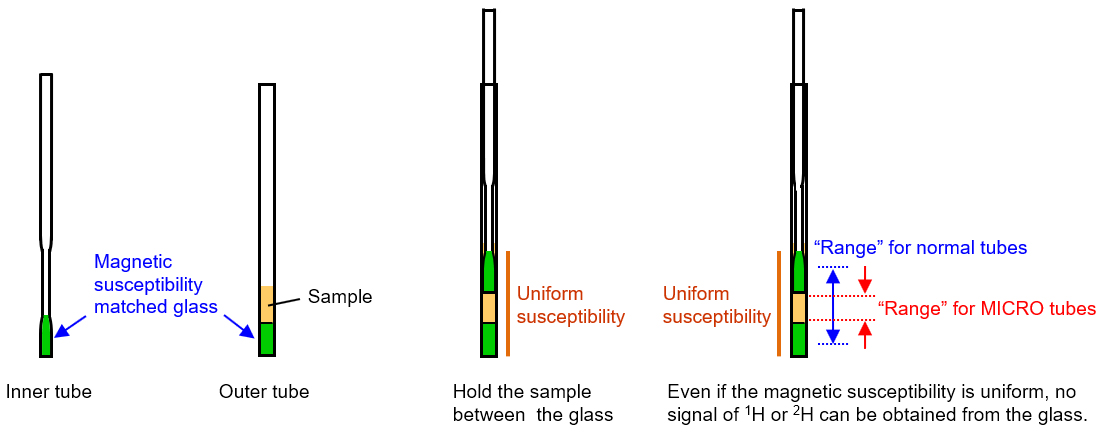
Micro Bottom Tubes
If you would like to measure a sample in a 3 mm diameter tube with a 5 mm probe, you would generally use a sample holder for a 3 mm tube (shown on the left). It is available for 5 mm sample holder to use ⌀5 micro bottom tube (shown on the right). In this sample tube, the part to hold the sample is 3 mm in diameter and the upper part is 5 mm in diameter, so a conventional sample holder for a 5 mm tube will be usable. Some types of micro bottom tubes have a bottom diameter smaller than 3 mm. Since the gradient shim conditions for the micro bottom tubes are the same as for a normal 5 mm sample tube, we can operate routine experiment without losing usability.
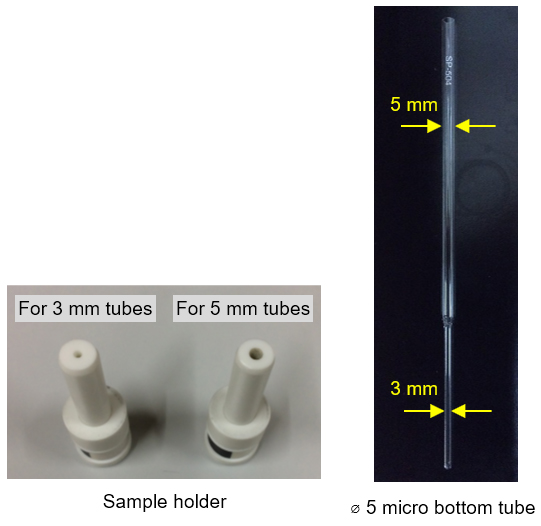
Gastight Tubes
For anaerobic materials, such as electrode materials for rechargeable batteries, the sample is prepared in a glove box. In this case, a highly airtight sample tube with a valve is used. The tubes are available from several sample tube manufacturers, including NORELL, Inc. and SP Industries, Inc. (Wilmad-LabGlass). The sample tube has a screw cap with a valve, which seals the tube when the cap is closed.
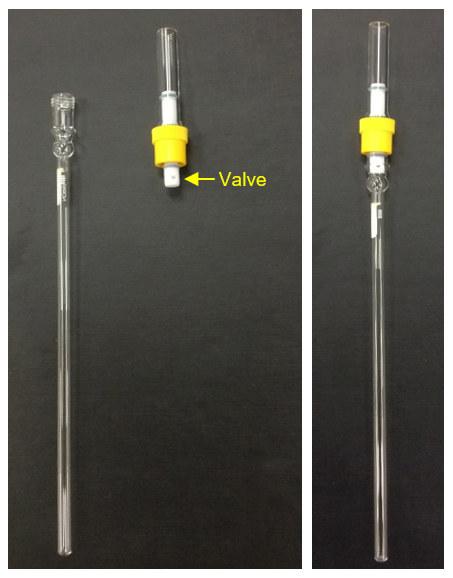
Fluorocarbon resin sample tube
If you want to reduce the background signal derived from glass in the measurement of silicon or boron, fluorocarbon resin sample tube which doesn’t contain silicon and boron will be very convenient. The sample tubes are available from NORELL, Inc., Wilmad-LabGlass, and others. To use this sample tube, the special open glass tube has to be attached to this. Pass the sample tube through a glass tube with both ends open, and insert it into the sample holder. Then attach the O-rings to the sample tube and fix the glass tube with the upper and lower O-rings. For this sample tube, the spinning will not be recommended.
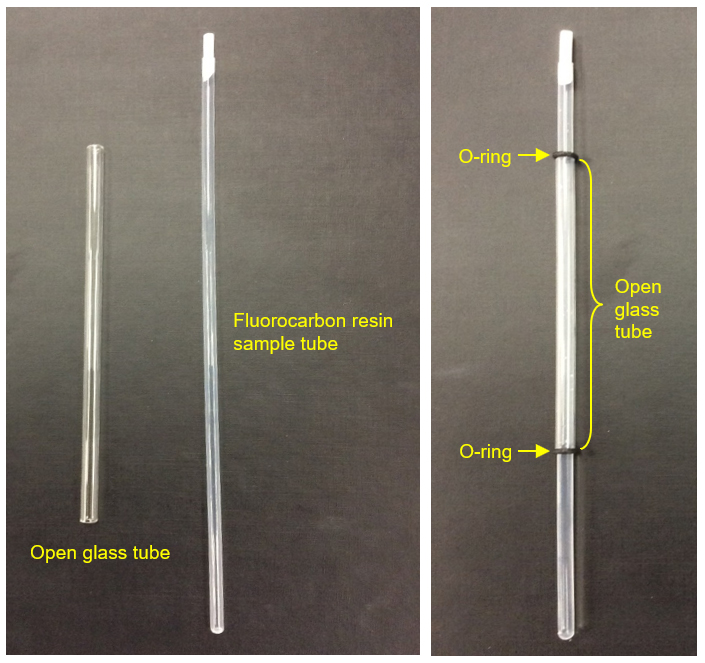
Quartz Tubes
Normal NMR sample tubes are made of borosilicate glass. Borosilicate glass is mainly composed of B2O3 and SiO2. Therefore, the measurement of boron gives a background signal derived from glass. On the other hand, since quartz glass is mainly composed of SiO2, the background signal of boron can be reduced by using a quartz sample tube. Synthetic quartz has fewer impurities than natural quartz. Quartz tubes are available from several sample tube manufacturers, including Shigemi Co. Ltd., NORELL, Inc., and Wilmad-LabGlass.
Reaction Monitoring System
The reaction monitoring system from Wilmad-LabGlass allows you to track the progress of the reaction between two components. It consists of an inner tube and an outer tube that allow two solutions to be mixed in the sample tube (see left figure). The tip of the inner tube is made of fluororesin, and the two solutions can be kept separate until the mixing operation is carried out with this. First, fill the inner and outer tubes with the two solutions, respectively (see center figure), and measure the sample before the reaction. After the measurement, eject the sample, loosen the set screw for the inner tube and pull up the inner tube to mix the two solutions (shown on the right). Tighten the set screw to fix the inner tube, then load the sample and measure the mixed sample. This sample tube also will not be recommended to apply spinning. Since the tip of the inner tube is made of resin, the range of the gradient shim will has to be optimized to narrow.
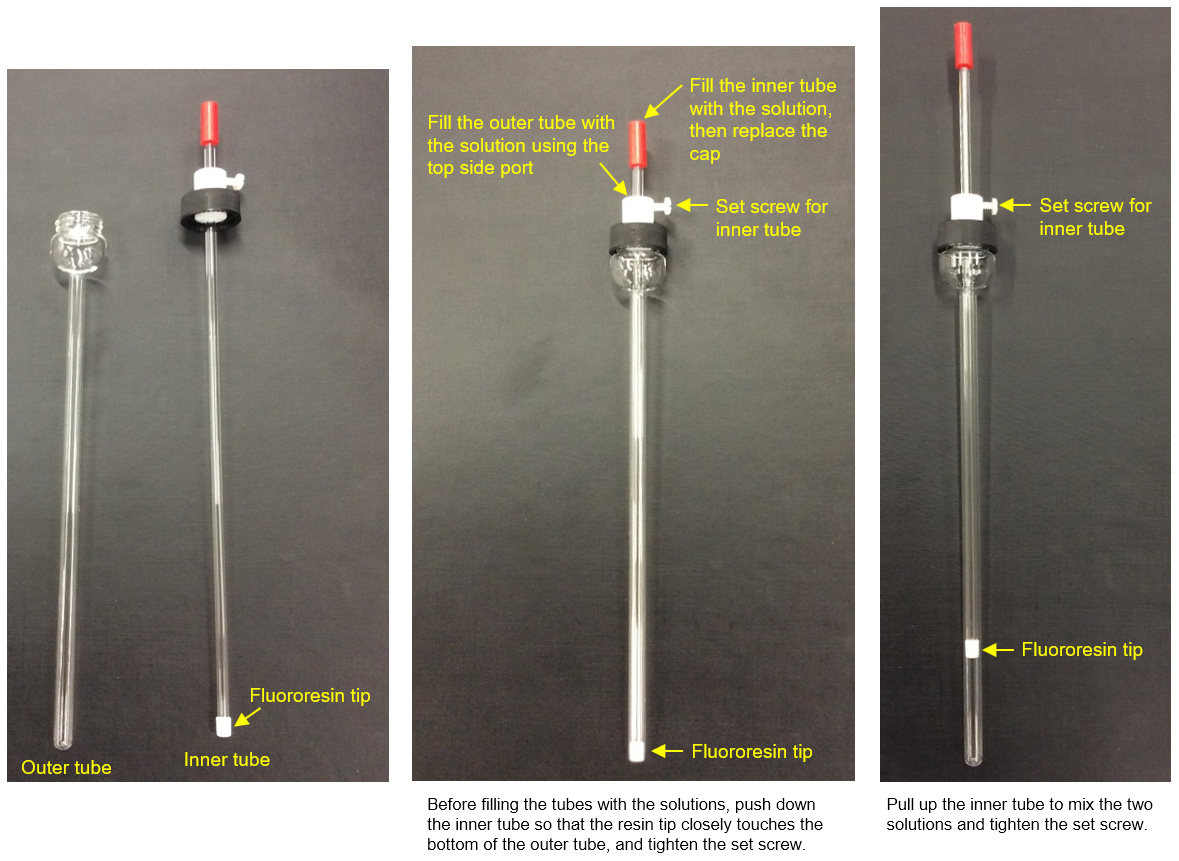
For the specifications and handling of each sample tube, please contact the sample tube manufacturer directly.
- Please see the PDF file for the additional information.
Another window opens when you click. 
PDF 556KB
SEARCH APPLICATIONS
Related Products
Are you a medical professional or personnel engaged in medical care?
No
Please be reminded that these pages are not intended to provide the general public with information about the products.
